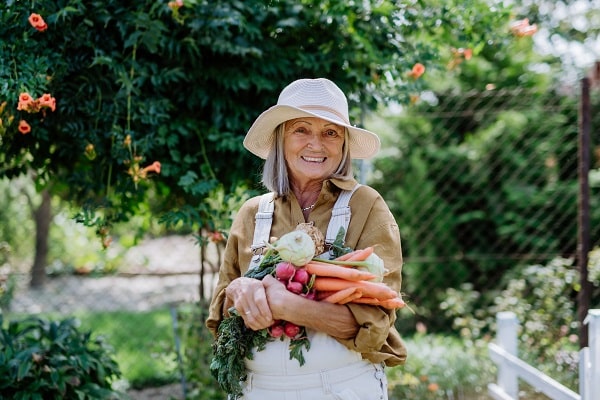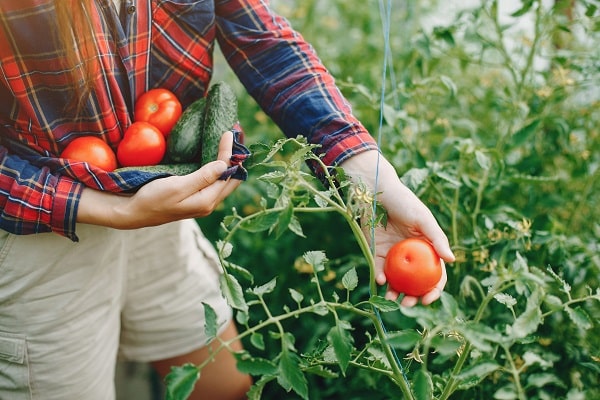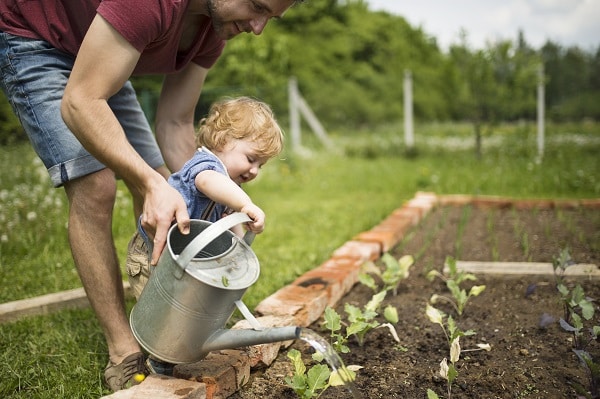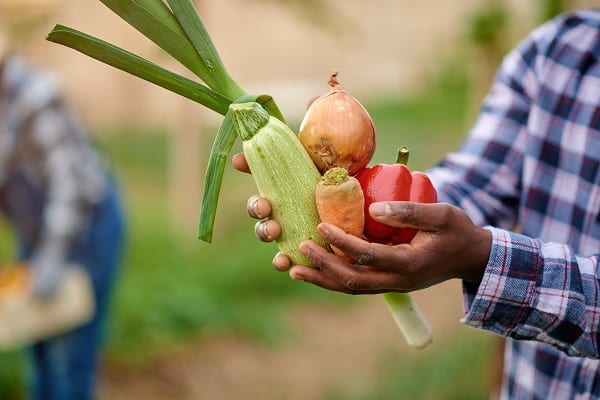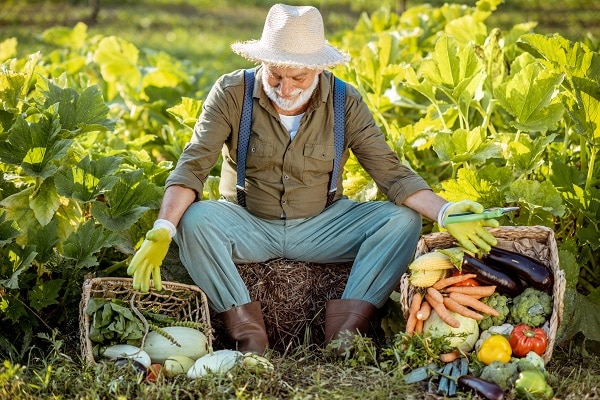Succession planting is a strategic method employed by gardeners and farmers alike to maximize the output of their gardens and fields throughout the growing season. This practice involves growing a series of different crops in the same space at varying times to maintain a continuous and diversified harvest. This post aims to provide a comprehensive overview of succession planting, detailing its benefits, factors to consider, implementation strategies, and more. By understanding the principles of succession planting, readers will be empowered to efficiently utilize their gardening spaces, enhance their harvest, and contribute to sustainable gardening practices.
Contents
- 1 The Basics Of Succession Planting
- 2 Why Succession Planting Is Beneficial
- 3 Understanding Plant Life Cycles
- 4 Essential Factors To Consider
- 5 Choosing The Right Plants
- 6 Starting With Simple Succession Planting Schemes
- 7 Implementing Advanced Strategies
- 8 Common Challenges In Succession Planting
- 9 Consider Giving Succession Planting A Try!
The Basics Of Succession Planting
In essence, succession planting is an agricultural strategy involving planting different crops in a specific order to ensure a consistent produce supply. This method can take various forms, such as sowing a fast-growing crop in the space of a slower-growing one or planting a new batch of the same crop every few weeks to extend the harvest. This agricultural practice has been employed for centuries across different cultures and regions, evolving to fit diverse climates, cultures, and needs. Over time, it has become a crucial tool for maximizing crop yields, especially in areas with limited agricultural space.
The principle behind succession planting is rooted in understanding the life cycle of plants and their unique growth requirements. Different plants have varying maturity times, and some crops are better suited for certain seasons than others. By planning what to plant and when gardeners can ensure they have a consistent harvest throughout the growing season. The beauty of succession planting lies in its flexibility, allowing adaptations based on local climates, personal preferences, and the availability of garden space.
Why Succession Planting Is Beneficial
Succession planting offers several benefits, the primary among them being a continual harvest. With careful planning, a gardener can enjoy a steady supply of fresh vegetables, herbs, or flowers throughout the season. This constant supply can not only fulfill personal consumption needs but also provide a potential income source if you decide to sell the produce. By using succession planting techniques, a garden that would typically sit idle after you can transform a single crop harvest into a productive, continuously-yielding space.
Furthermore, succession planting promotes efficient use of space and resources. In urban areas, where garden space may be limited, making the most out of every square foot becomes crucial. Succession planting enables gardeners to grow more food in a small area, reducing the need for large plots of land. Additionally, this method encourages the responsible use of water, soil nutrients, and other resources. It can also improve soil health by varying the types of plants in a space, which can prevent the buildup of specific pests or diseases and foster a healthy ecosystem in the garden.
Understanding Plant Life Cycles
Understanding plant life cycles is pivotal for successful succession planting. In general, plants fall into three categories: annuals, biennials, and perennials. Annuals complete their life cycle in one growing season, biennials require two seasons, and perennials live for more than two years. Each of these plant types presents unique considerations for succession planting. For instance, annuals like tomatoes, cucumbers, or zucchini might be excellent choices for a summer garden but will need replacement with cool-season crops like spinach or lettuce as the weather cools.
Biennials such as carrots or onions can be planted in the spring and harvested in the fall, but they require a bit more planning to accommodate their two-year life cycle. Perennials, including asparagus or rhubarb, may take up a portion of your garden for many years, offering harvests each season after they’ve matured. Recognizing these differences allows gardeners to make informed decisions about what and when to plant to ensure a continuous harvest.
Essential Factors To Consider
When planning for succession planting, several factors need to be taken into account. One of the most important is soil fertility and condition. Each type of plant has specific nutrient requirements, and rotating different crops can help balance the use of these nutrients in the soil. It’s crucial to monitor soil health, replenishing it with organic matter or compost as needed. Also, it’s beneficial to get a soil test to understand your garden’s unique nutrient profile and pH level.
Another essential factor is the sunlight and water requirements of each plant. Some plants thrive in full sun, while others do well in partial shade. Similarly, certain plants need a lot of water, whereas others prefer drier conditions. By understanding these needs, you can position your plants optimally and pair plants with similar requirements. Additionally, keeping track of the growing seasons and climate in your area will help you decide which plants are most likely to thrive and when to plant them.
Choosing The Right Plants
Selecting the right plants for succession planting involves grouping plants based on their maturation time. Quick-growing plants such as radishes, spinach, and lettuce can be planted several times throughout the season. Slower maturing crops like tomatoes, peppers, and eggplants will likely only produce one major harvest. Mixing fast and slow-growing crops can ensure a steady yield throughout the season.
Crop rotation and companion planting also play vital roles in choosing plants for succession planting. Crop rotation involves changing the type of plant grown in each area of your garden from year to year to prevent the buildup of pests and diseases that prefer specific plants. Companion planting, on the other hand, involves growing plants that benefit each other close together. For instance, planting basil near tomatoes can help deter pests and enhance the flavor of the tomatoes.
Starting With Simple Succession Planting Schemes
For beginners, starting with a simple succession planting scheme can be a practical approach. For example, a basic scheme might involve planting fast-growing crops like radishes or lettuce between slower-growing crops like broccoli or tomatoes. Once the fast-growing crops are harvested, it provides more room for the slower-growing crops to expand.
Additionally, you can use the same space to grow a spring crop, followed by a summer crop and then a fall crop. For instance, you might plant peas in the early spring, followed by beans in the summer, and finally garlic in the fall for harvesting the following summer. These simple schemes can be a stepping stone to more complex succession planting strategies as you gain experience and understanding of the process.
Implementing Advanced Strategies
Once you have a handle on the basics, you can start implementing more advanced succession planting strategies. One such strategy is interplanting, which involves growing two or more types of plants in the same area that mature at different times. For example, you could plant fast-growing lettuce amongst slower-maturing broccoli. Then you can harvest the lettuce before the broccoli needs more space to grow.
Relay planting is another advanced strategy that involves planting a new crop in the same space as soon as the previous one is harvested. This method requires careful timing to ensure the second crop is planted soon enough to reach maturity before the end of the growing season. Understanding the growth rates and requirements of different plants is essential for successful relay planting. These advanced strategies can maximize the productivity of your garden even further.
Common Challenges In Succession Planting
Succession planting, while incredibly beneficial, is not without its challenges. One of the most common issues is timing. It can be challenging to predict when one crop will be ready for harvest and a new crop ready for planting, particularly when weather conditions can alter growing times. To address this, keep a garden journal to record when crops are planted and harvested. Over time, this data will help in creating more accurate planting schedules.
Pest and disease management can also be more complex with succession planting. Different crops attract different pests and diseases, and these can become problems if not managed correctly. Crop rotation is an excellent way to mitigate these issues. By changing the types of crops grown in each area each year, you can disrupt the life cycles of pests and diseases, reducing their impact.
Consider Giving Succession Planting A Try!
Succession planting is a powerful and efficient gardening practice that allows for the continual harvest of a variety of crops throughout the growing season. With careful planning, understanding of plant life cycles, and consideration of factors such as soil health and climate, gardeners can significantly enhance their gardens’ productivity, whether in a backyard plot or an urban container garden. So if you want to maximize the potential of your garden, give succession planting a try!

